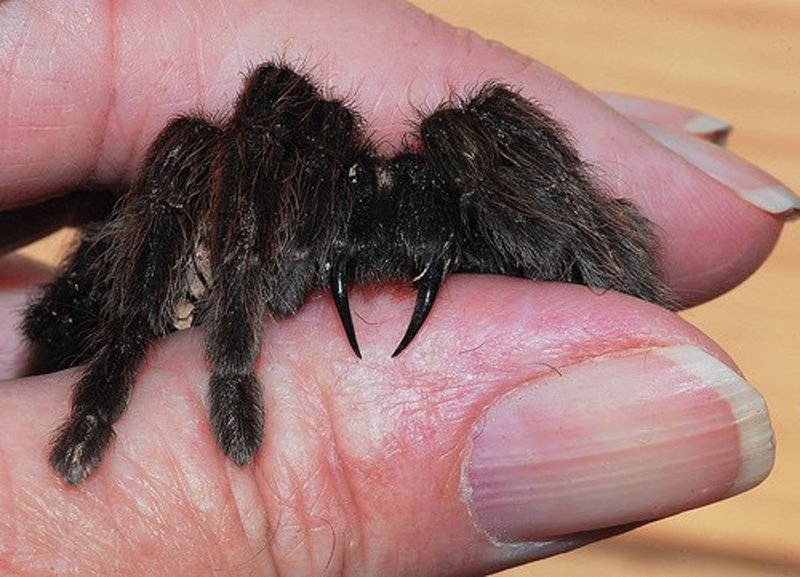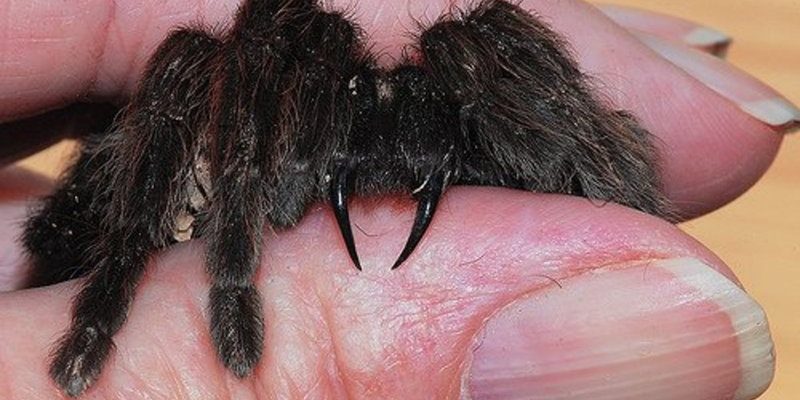
Curly Hair Tarantulas, known scientifically as *Brachypelma albopilosum*, are a popular choice for pet owners. They come from Central America and are known for their friendly demeanor. Yet, the question of whether they bite—and what that means for you—can feel a bit daunting. I mean, let’s be real: no one wants to get bitten by a spider! But fear not; I’m here to break it down for you, so you can appreciate these creatures without any unnecessary worry.
What is the Curly Hair Tarantula?
The Curly Hair Tarantula is a medium-sized spider, generally reaching about 4 to 5 inches in body length, with a leg span that stretches even wider. One of their most striking features is their curly hair, which gives them a soft appearance. These tarantulas have a mix of colors—often a dark brown or black with hints of gold or yellow in their curly hair.
These spiders hail from places like Honduras and Nicaragua, where they make their homes in the forests. They prefer burrowing into the ground, which is why they’re often found in dark, hidden spots. This isn’t just for fun; it’s a smart survival tactic. Being hidden away helps them avoid predators and stay safe while waiting for unsuspecting insects to stroll by.
When you see a Curly Hair Tarantula in captivity, you’ll notice they have a calm personality, making them a favorite among reptile enthusiasts. Although they’re not the flashiest of tarantulas, their gentle nature often wins over hearts.
Do Curly Hair Tarantulas Bite?
You might be surprised to learn that while Curly Hair Tarantulas can bite, it’s not a common occurrence. These spiders are generally pretty chill and prefer to retreat into their burrows rather than attack. Most of the time, they’ll show warning signs first, such as raising their front legs or flicking their hairs.
If a Curly Hair Tarantula does bite, what should you expect? Well, their bites are often compared to a bee sting—painful, but not life-threatening. Most people report only mild pain or irritation. Their venom is not particularly potent, especially when compared to many other spider species.
Here’s the thing: while it’s good to know they can bite, you should also remember that they don’t want to bite you. They’d much rather avoid conflict. So, if you’re handling one, it’s essential to be gentle and calm. They pick up on your energy!
How to Handle a Curly Hair Tarantula
If you’re considering adding a Curly Hair Tarantula to your life or already have one, handling them with care is vital. Here’s a quick guide on how to do it safely:
- Wash Your Hands: Before you even think about touching your tarantula, give your hands a good wash to remove any scents or oils that might stress them out.
- Stay Calm: Remember, these spiders can sense your anxiety. Approach slowly and deliberately.
- Use a Container: If you need to move your tarantula, it’s best to do so in a small container rather than directly with your hands. This keeps everyone safe.
- Observe First: Spend some time watching your tarantula before you handle it. This way, you can get a feel for its behavior.
Handling your Curly Hair Tarantula thoughtfully not only keeps you safe but also helps your pet feel more comfortable around you.
Understanding Tarantula Behavior
Tarantulas can be quite misunderstood. Many people think that just because they’re spiders, they’re aggressive or dangerous. In reality, Curly Hair Tarantulas are often more interested in hiding than biting. If threatened, they might display defensive behavior, such as raising their legs or making a hissing sound.
Observing their body language is key. If your tarantula is moving around with its legs raised, it might be feeling scared or defensive. On the other hand, if it’s strolling around calmly, that’s a sign it’s feeling safe.
Providing a suitable habitat can also help minimize stress. A spacious tank with plenty of substrate for burrowing, along with a few hiding spots like logs or plants, can make your tarantula feel right at home.
What to Do if You’re Bitten
In the rare event that you do get bitten by a Curly Hair Tarantula, here’s a simple guide on what to do:
1. Stay Calm: Panicking won’t help. Take a deep breath and assess the situation.
2. Clean the Wound: Gently wash the bite area with soap and water. This helps prevent any potential infection.
3. Apply Ice: If you feel swelling or pain, applying a cold pack can help relieve it.
4. Monitor Symptoms: Keep an eye on how you feel. If you notice any unusual symptoms, like severe pain or swelling, it’s wise to seek medical attention.
Overall, remember that bites are rare, and most encounters are harmless. But being informed can help ease your mind.
Curly Hair Tarantulas as Pets
If you’re thinking about owning a Curly Hair Tarantula, they can make a rewarding pet choice. They’re low-maintenance and fascinating to watch. Plus, their easy-going nature makes them suitable for beginners.
Before bringing one home, consider the following:
- Tank Size: A terrarium of at least 10-20 gallons is ideal, providing enough space for burrowing and roaming.
- Temperature and Humidity: Keep the environment warm (around 75-80°F) and slightly humid, simulating their natural habitat.
- Diet: Curly Hair Tarantulas typically eat crickets, mealworms, and roaches. Make sure to dust their food with calcium for good health!
With a little preparation and knowledge, owning a Curly Hair Tarantula can be a fulfilling experience. Plus, how cool is it to say you have a pet spider?
Final Thoughts
Wading through the world of pet tarantulas can seem overwhelming, especially if you’re worried about bites. But remember, the Curly Hair Tarantula is known more for its gentle temperament than its fangs. Most of the time, they’d rather hide than bite, and with proper handling, you can enjoy this unique pet without fear.
So, if you’re thinking about owning one or already have one, embrace the journey! They’re not just spiders; they’re intriguing little personalities that bring a touch of the wild into our homes. Keep learning and observing, and you’ll grow to appreciate these curious creatures just as much as I do!

